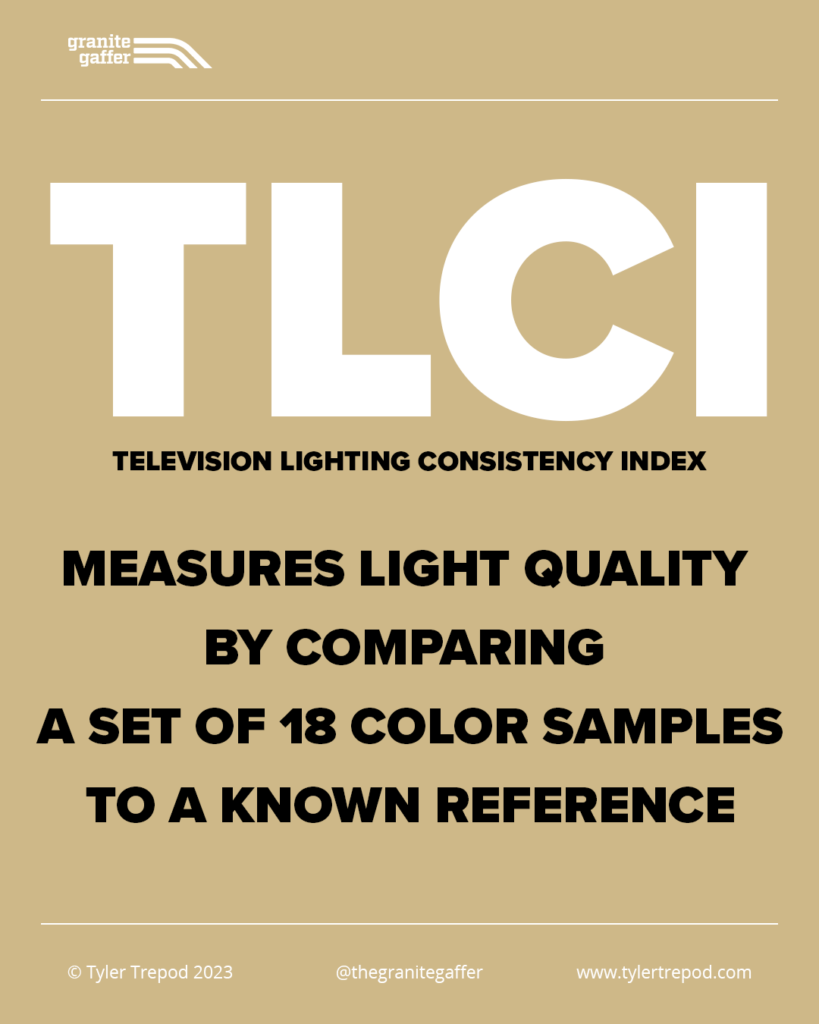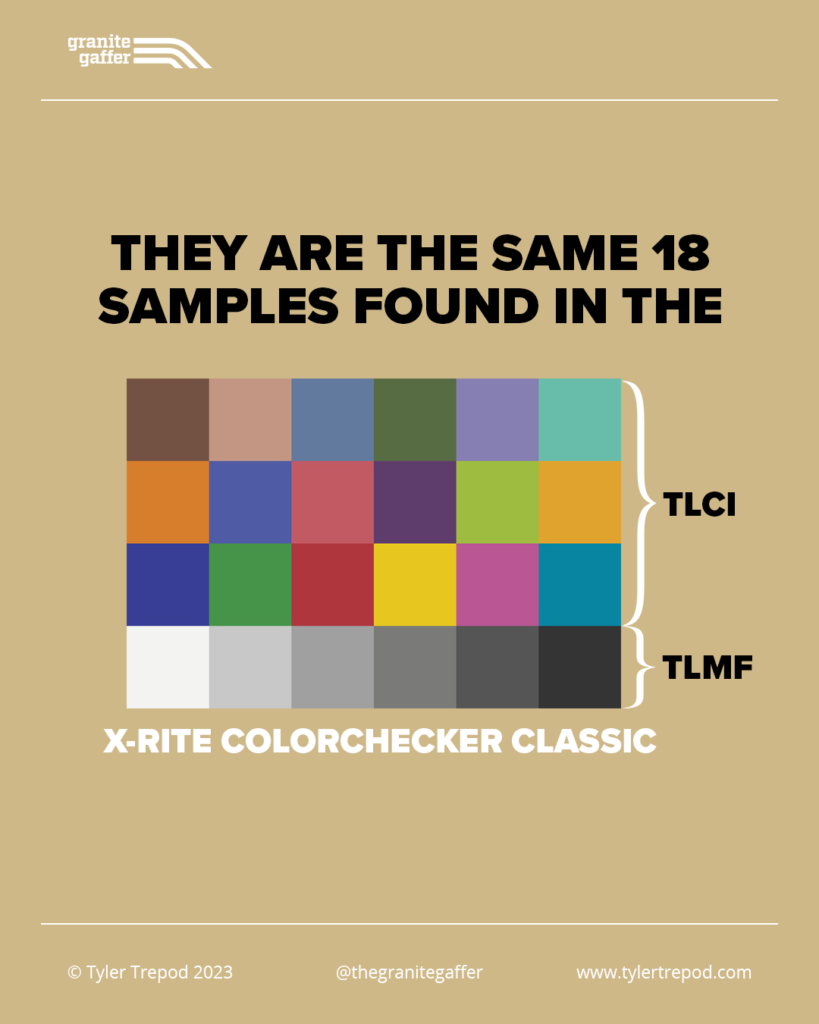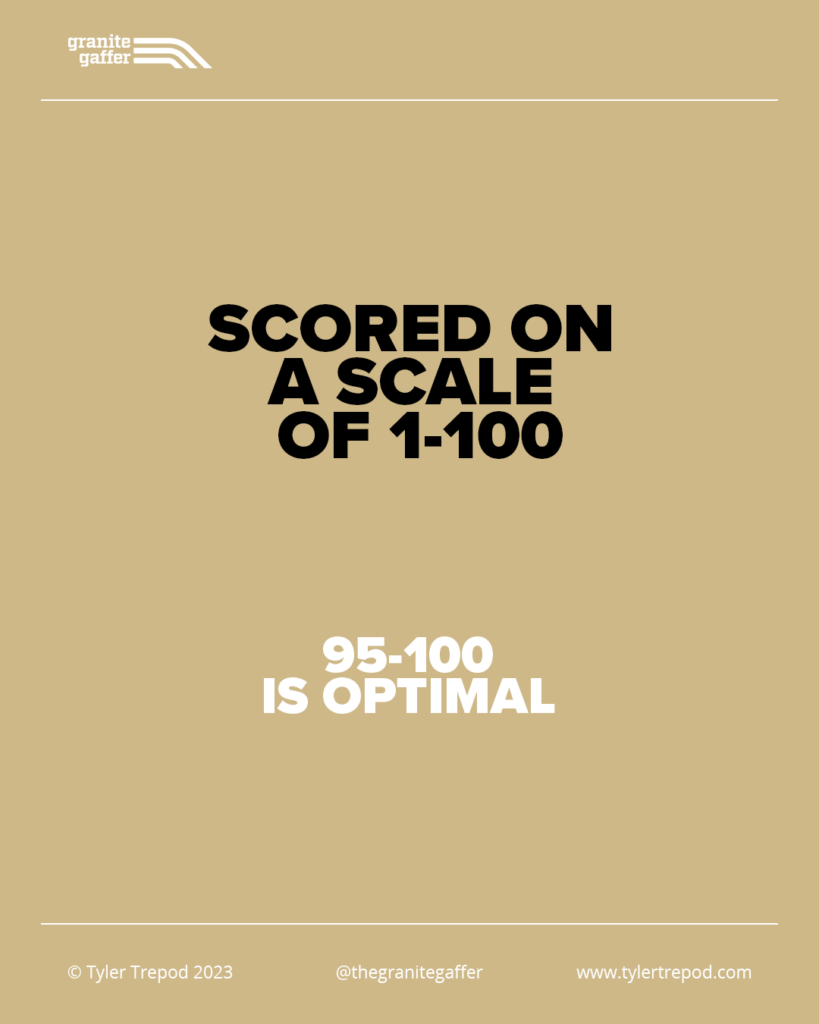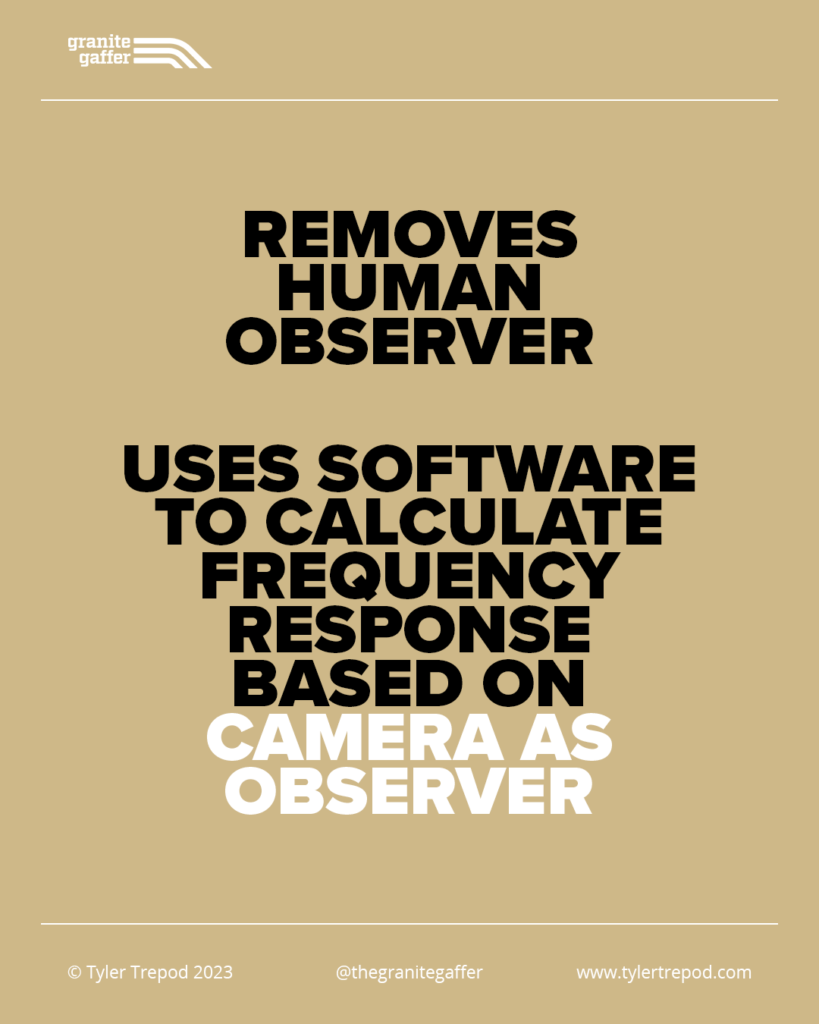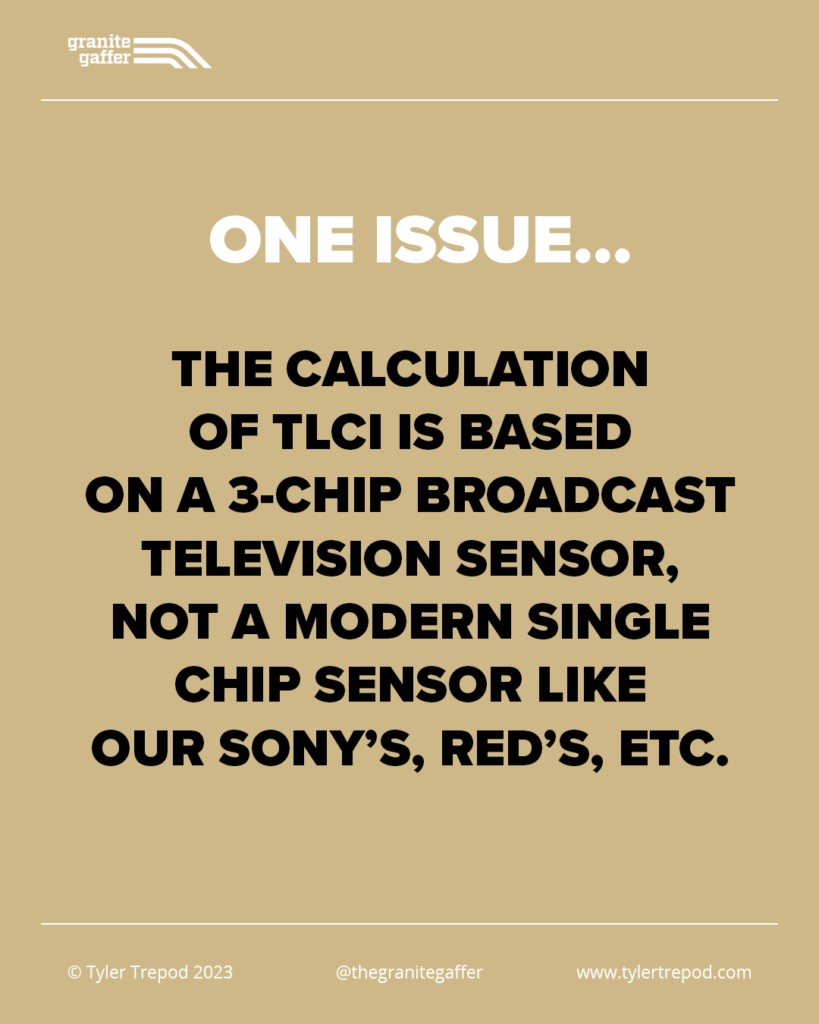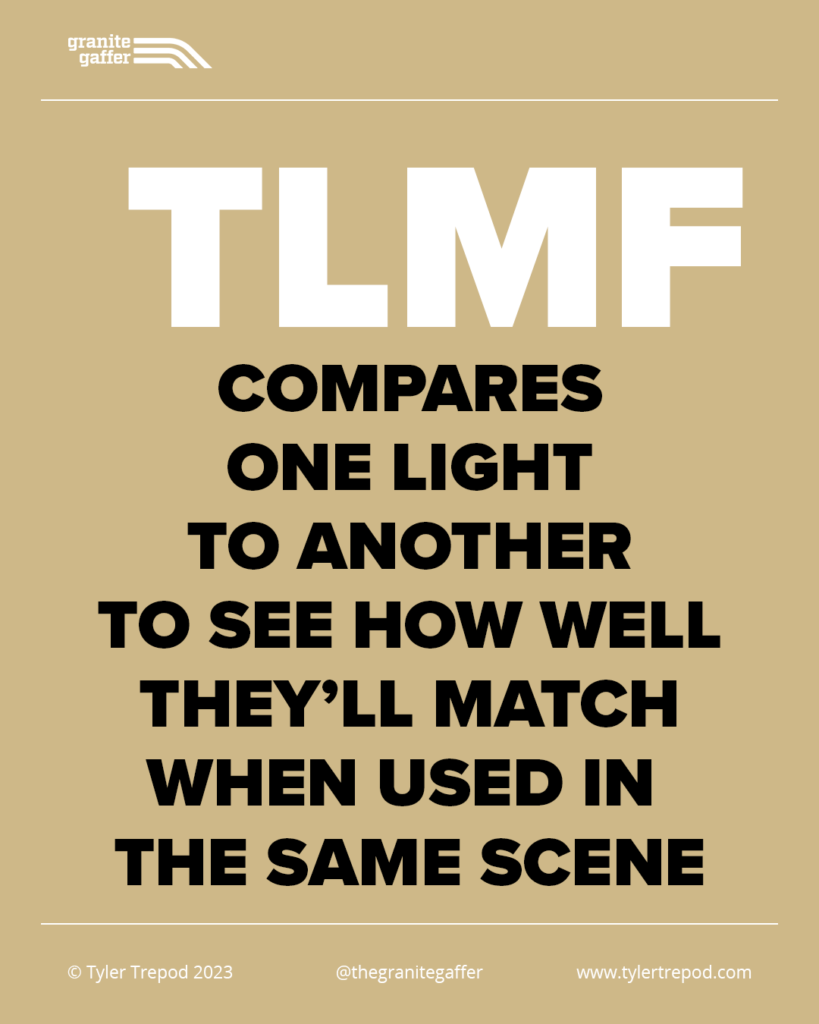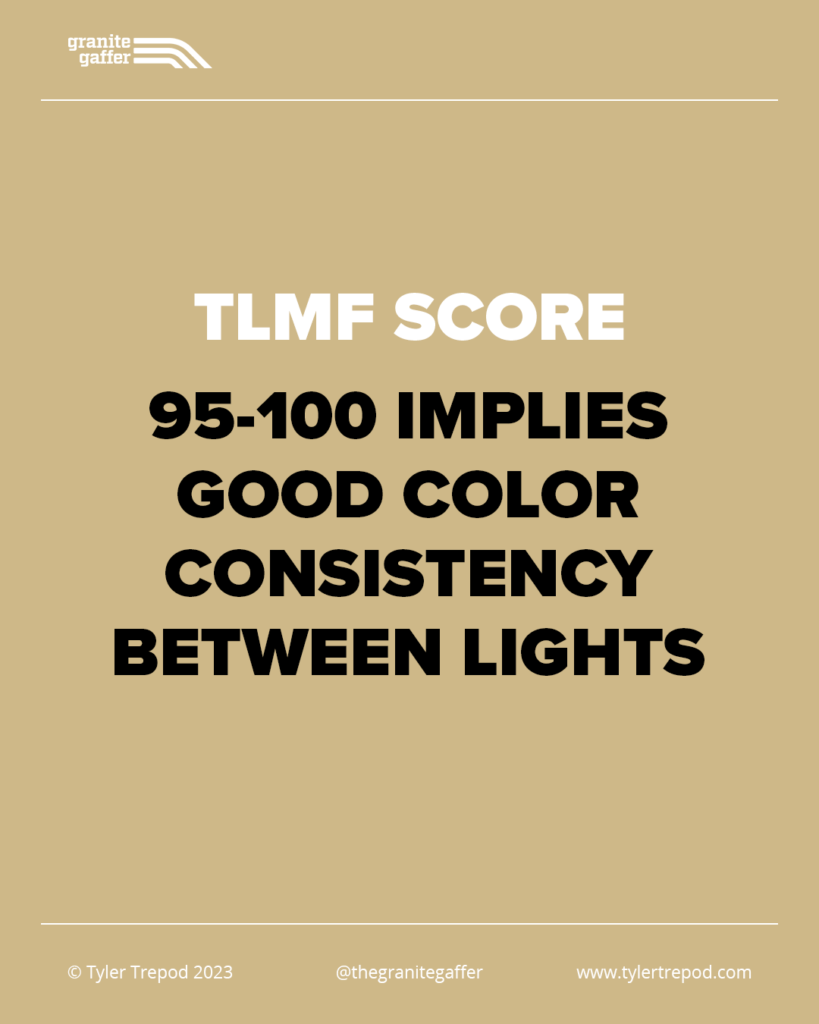guide: understanding TLCI
Last week I talked about CRI and mentioned some of the shortcomings of using that lighting metric.
So what replaced it?
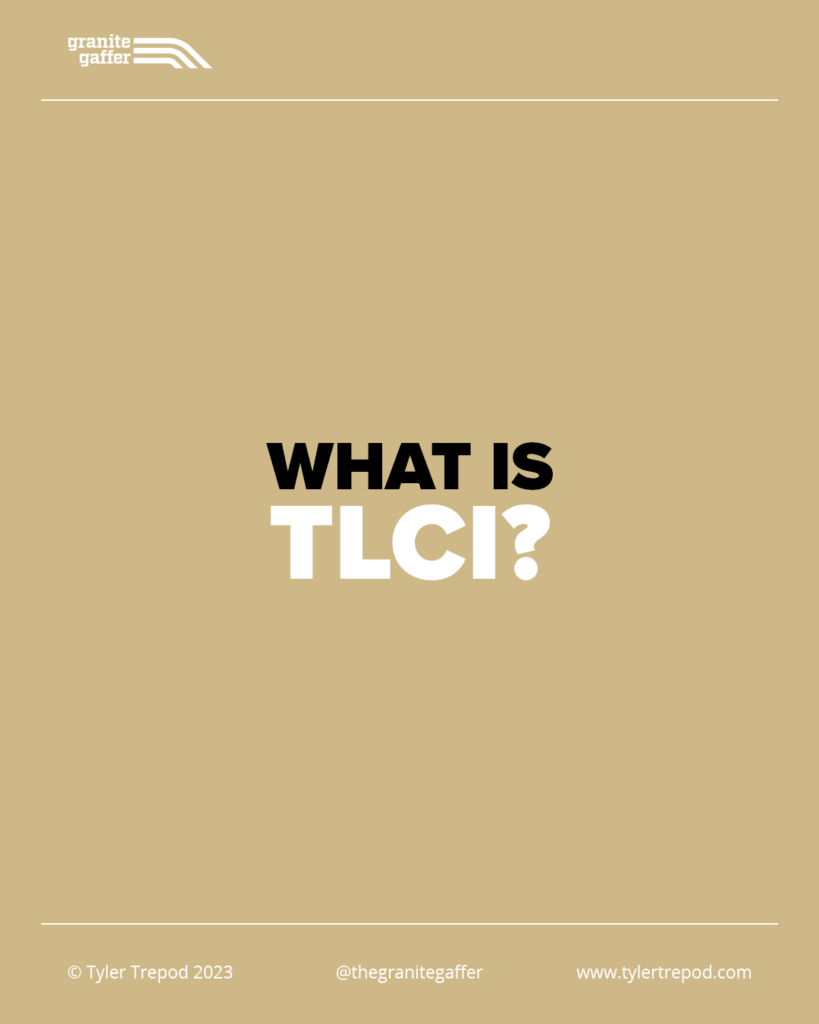
summary
A British bloke by the name of Alan Robert’s developed TLCI around the 1970’s.
Two major differences between TLCI and CRI made TLCI an improvement in measuring the quality of a light’s output:
1) it used 18 color samples instead of just 8, and
2) it replaced the human observer with software designed to calculate how a camera would respond.
However, one of the issues with TLCI is that this calculation is based off old broadcast 3-chip sensor cameras, not current single chip cameras. This means that there is some discrepancy between a high TLCI value and color rendition on our modern cameras. This is one of the main reasons TLCI is also falling to the wayside as a metric.
What about those gray patches at the bottom of the chart?
Those 6 colors of grayscale at the bottom of the color checker are used to help measure TLMF.
TLMF, television lighting matching factor, is a score that helps distinguish compatibility between two different lights. A higher score like 95+ implies these lights can be used together without a concern for how the combination will affect color accuracy.
